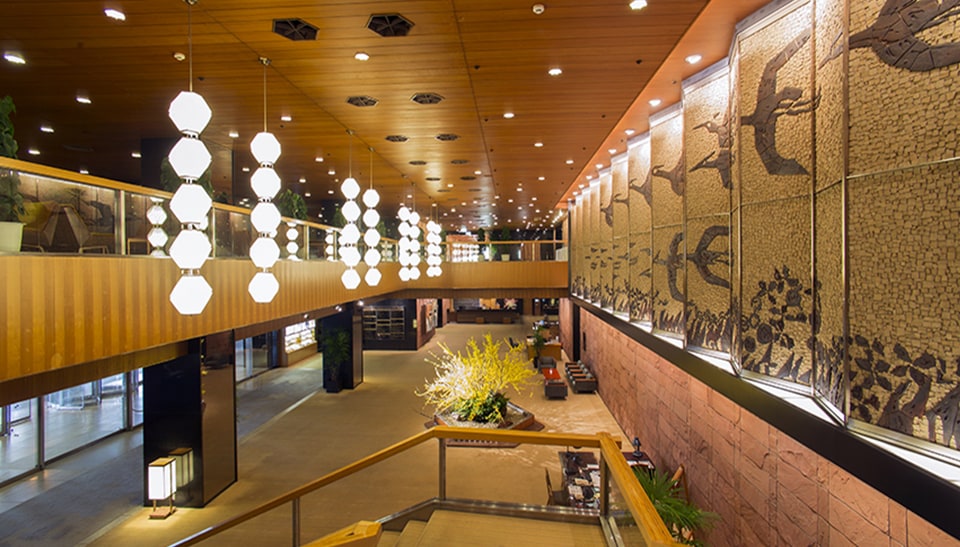
The hotel, famed for it’s low level style and quiet understated luxury closed its doors on Monday 31 August, ahead of a full demolition and four-year reconstruction of the main building. The hotel’s South Wing will remain open throughout, while the new main building a sleek, glass high-rise – perhaps more in keeping with the style of modern Tokyo, is slated to open in 2019.
The redevelopment comes amid tightening earthquake proofing regulations and a strengthening business hotel market that sandwiches the Okura between cheap Y3,000-a-night business hotels and its high-end competitors. In a city that is constantly renewed, it seems the understated glamour of the Okura could not keep up.
The decision, which had been rumoured for months before being announced in May, was met with a mixture of sadness and uproar. An online petition, savetheokura.com, described a “heartbreaking and irreparable loss”.
“Change and construction are features of life in Tokyo and contribute to the city’s thrilling sense of purpose and energy. But should they come at the expense of the capital’s history and identity? The greatest world cities – Tokyo among them – are the ones that are rich in texture,” the website says.
The hotel was first opened two years before the Tokyo Olympics in 1964, and will reopen ahead of the 2020 games. Though developers insist it will retain its sense of history and Japanese tradition, mourners of its loss – lovers of modern Japanese architecture – will argue that its end is just another example of the destruction of a much love architectural style.
The savetheokura website, hosted by the Monocle magazine, says, “In the past decade some of the most painful demolitions have included the pre-war Sanshin Building in Hibiya and the Hanezawa Garden, a sprawling wooden residence and garden in Hiroo that dated back to 1915. Even the family home of the empress couldn’t be saved from the bulldozers. The central post office, a piece of startling white modernism from 1931, would have gone too if politician Kunio Hatoyama hadn’t taken a stand.”
Ellie Clayton




